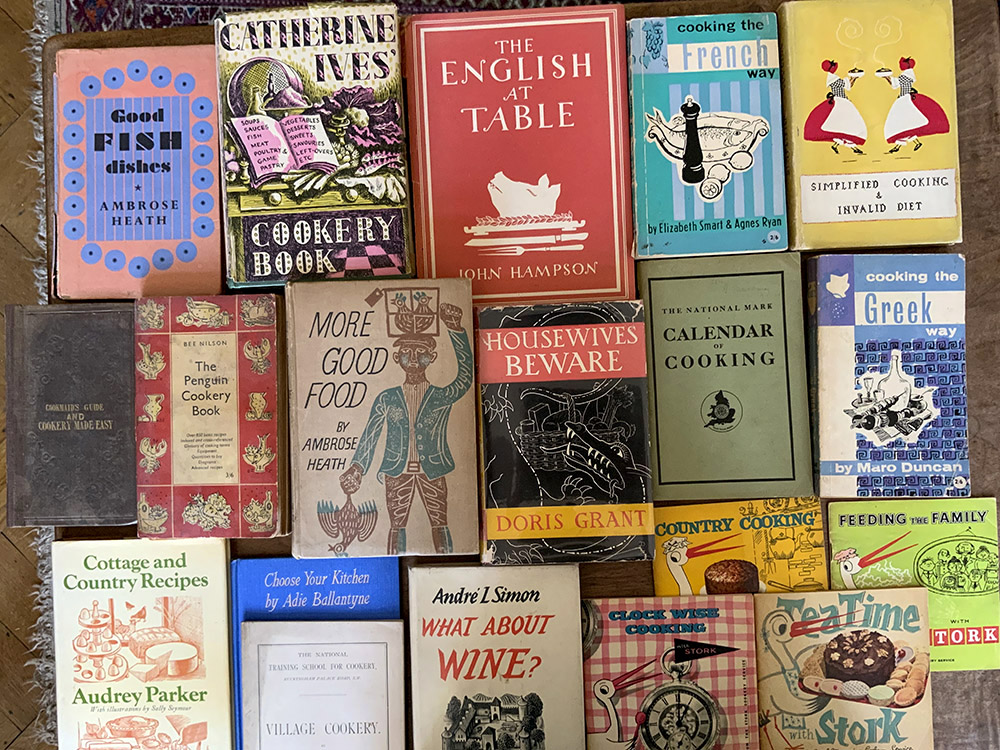My Old Cookery Books
I am a collector of old cookery and household management books. My mother started the collection and I inherited her books when she died, over 20 years ago. For about a decade after she died, the books just sat on my shelves, but in the last 10 years I have been actively adding to the collection, and have expanded it considerably.
My collection now includes a few hundred books, dating from about 1720 to about 1980. The majority are printed books, but I also have a small but growing section of manuscript recipe, remedy and account books. These are possibly my favourite part of the collection. Another expanding area is food manufacturers’ pamphlets and advertisements. I have a particular fondness for Stork pamphlets from the 1950s and early 1960s.

There are several things I really like about cookery and household management books. One is that they are predominantly written by women, used by women, given as gifts by women and annotated by women. Of course, there are cookery books written by men, and I have several of these from the early nineteenth century, but they tend to be of the ‘Grand Chef’ variety, often with a frontispiece portrait of the great man. They are often more pristine than most of my books, suggesting that they have been less used by actual cooks.
I like the way most of my books show signs of wear. Unlike most book collectors, I am not overly concerned about condition – I like it when I can see what the former owners of books liked to cook, when books fall open on certain pages, sometimes even with splashes of batter or grease. One of my favourites, a small book from New England from 1848, has splashes of candlewax on the front cover.

Annotations are great. Sometimes a former owner has written in a margin a correction or addition to a recipe, or a comment on how it worked out. Extra recipes are often copied onto flyleaves at the back of a book. Sometimes margins or blank pages are used for scribbling accounts, lists or drafts of letters. This kind of informality shows that these books, often kept in kitchens rather than more formal rooms had a different relationship with their owners than books which were perhaps bought and kept more for display purposes than actual use.
Recently I have started posting about these books on Instagram. If you are interested, have a look @LVMHouseholdBooks